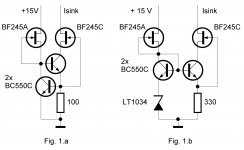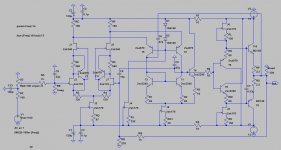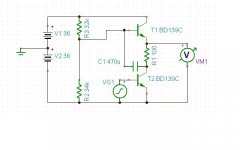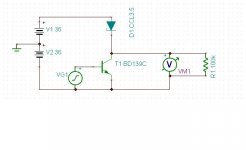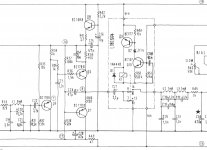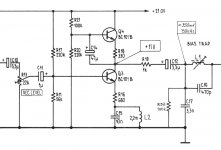If you look at what this is, you will see it is exactly the single FET, self biased with a resistor. I have not imported their model. I hope they picked a very fast FET. If so, it could be a winner. Looking at the data sheet does not give me a lot of hope.
They do not use fast FETs, because those have short channels for a high transconductance to capacitance ratio. They use long-channel devices for low output (drain) conductance. Because they are trying to make a good (i.e., high impedance at low-medium frequencies) current source/limiter.
If you look at what this is, you will see it is exactly the single FET, self biased with a resistor. I have not imported their model. I hope they picked a very fast FET. If so, it could be a winner. Looking at the data sheet does not give me a lot of hope.
Well, yes that is in fact the case. I know that. Just using a CRD alone was really good, as I posted earlier. The lower current values of CRD have higher impedance.
Last edited:
Hi dirkwright
Please proceed, I'm just searching freq flat CCS. Can you please sim attached CCS?
Sorry I have not simulated this one yet. Can you provide some part numbers please?
Compared to a normal common base VAS, i think the A797 VAS sounds "a lot" better. It doesn't alter "the tone" of the amp like some other tweaks do, it just sounds clearer and better.
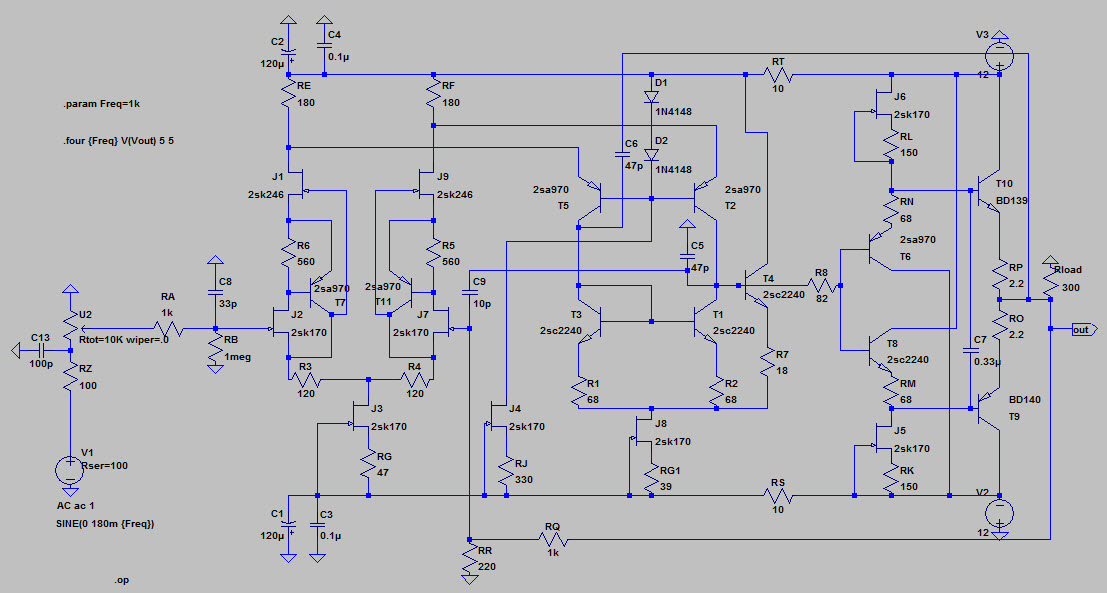
I've messed around with LIN-type amps with and without VAS cascode, not as thorough as with my small headphone folded cascode amps, but I think cascoded VAS softens the sound in an unnatural way.
I've messed around with LIN-type amps with and without VAS cascode, not as thorough as with my small headphone folded cascode amps, but I think cascoded VAS softens the sound in an unnatural way.
Attachments
Nelson,
Hmmm, several things here I have not seen. Feeding a current mirror from a ccs. Guess it does not matter which end the ccs is on. I wonder in a power amp VAS if it would eat too much of the available rail voltage. May I assume that the power for the above is well regulated?
I can't figure out that Q4 is for. I am quite new at this, so I may as a lot of simple questions. I am not questioning you, just my education.
Hmmm, several things here I have not seen. Feeding a current mirror from a ccs. Guess it does not matter which end the ccs is on. I wonder in a power amp VAS if it would eat too much of the available rail voltage. May I assume that the power for the above is well regulated?
I can't figure out that Q4 is for. I am quite new at this, so I may as a lot of simple questions. I am not questioning you, just my education.
Such a long time ago, I can't remember. SK170 and SK246 models are probably from this forum. I don't really use SA970/SC2240. I use the better soudning SA1016/SC2362 from Sanyo but I can't find proper models for them.Nelson,
Where did you get models of those transistors?
I have almost no electronic knowledge, so it's impossible for me to explain the function of Q4. There's an explanation in the datasheet and there are several threads here about AD797 and clones. I do know I can measure the reduction in distortion and hear a cleaner and more natural sound.
Could you post or send even the text of those models? They are closer than what is in LTSpice.
I'll search on AD797. I had not heard of that before.
.model 2sk170 NJF(Beta=59.86m Rs=4.151 Rd=4.151 Betatce=-.5 Lambda=1.923m Vto=-.5024 Vtotc=-2.5m Cgd=20p M=.3805 Pb=.4746 Fc=.5 Cgs=25.48p Isr=84.77p Nr=2 Is=8.477p N=1 Xti=3 Alpha=10u Vk=100 Kf=111.3E-18 Af=1 tnom=22)
.model 2sj74 PJF(Beta=92.12m Rs=7.748 Rd=7.748 Betatce=-.5 Lambda=4.464m Vto=-.5428 Vtotc=-2.5m Cgd=85.67p M=.3246 Pb=.3905 Fc=.5 Cgs=78.27p Isr=129.8p Nr=2 Is=12.98p N=1 Xti=3 Alpha=10u Vk=100 Kf=26.64E-18 Af=1)
.model 2sj103 PJF(Beta=2.197m Rs=76.76 Rd=76.76 Betatce=-.5 Lambda=735.3u Vto=-2.037 Vtotc=-2.5m Cgd=18.95p M=.5045 Pb=.3905 Fc=.5 Cgs=17.02p Isr=38.48f Nr=2 Is=3.848f N=1 Xti=3 Alpha=10u Vk=100 Kf=1E-18 Af=1)
.model 2sk246 NJF(Beta=1.07m Rs=56.76 Rd=56.76 Betatce=-.5 Lambda=2.8m Vto=-2.638 Vtotc=-2.5m Cgd=10.38p M=.4373 Pb=.3905 Fc=.5 Cgs=6.043p Isr=112.8p Nr=2 Is=11.28p N=1 Xti=3 Alpha=10u Vk=100 Kf=1E-18 Af=1)
.MODEL LSK170B NJF ( LEVEL=1 BETA=0.0350699 VTO=-0.5375582 LAMBDA=4.951E-3 IS=2.76212E-14 N=1 ACM=0 RD=7.82168 RS=6.9525888 CGD=4.36E-11 CGS=4.36E-11 PB=1.2 MJ=0.8892205 FC=0.5 KF=0 AF=1 )
.model 2sk170Tnom30 NJF(Tnom=30 Beta=59.86m Rs=4.151 Rd=4.151 Betatce=-.5 Lambda=1.923m Vto=-.5024 Vtotc=-2.5m Cgd=20p M=.3805 Pb=.4746 Fc=.5 Cgs=25.48p Isr=84.77p Nr=2 Is=8.477p N=1 Xti=3 Alpha=10u Vk=100 Kf=111.3E-18 Af=1)
.model 2sc2240Tnom30 NPN(Tnom=30 Is=99.13f Xti=3 Eg=1.11 Vaf=422.2 Bf=352.8 Ise=1.179p Ne=1.782 Ikf=.4704 Nk=.9631 Xtb=1.5 Var=100 Br=1.663 Isc=555.1p Nc=1.796 Ikr=5.85 Rc=.2032 Cjc=7.561p Mjc=.2472 Vjc=.3905 Fc=.5 Cje=5p Mje=.3333 Vje=.75 Tr=10n Tf=1.295n Itf=1 Xtf=0 Vtf=10)
.model 2sa970Tnom30 PNP(tnom=30 Is=465.4f Xti=3 Eg=1.11 Vaf=57 Bf=407.6 Ise=4.683p Ne=2.051 Ikf=.3998 Nk=1.192 Xtb=1.5 Var=100 Br=1 Isc=465.4f Nc=1.048 Ikr=6.032 Rc=2.343 Cjc=11.59p Mjc=.4014 Vjc=1.155 Fc=.5 Cje=5p Mje=.3333 Vje=.75 Tr=10n Tf=1.252n Itf=1 Xtf=0 Vtf=10)
.MODEL BD137 NPN( IS=1e-09 BF=222.664 NF=0.85 VAF=36.4079 IKF=0.166126 ISE=5.03418e-09 NE=1.45313 BR=1.35467 NR=1.33751 VAR=142.931 IKR=1.66126 ISC=5.02557e-09 NC=3.10227 RB=26.9143 IRB=0.1 RBM=0.1 RE=0.000472454 RC=1.04109 XTB=0.727762 XTI=1.04311 EG=1.05 CJE=1e-11 VJE=0.75 MJE=0.33 TF=1e-09 XTF=1 VTF=10 ITF=0.01 CJC=1e-11 VJC=0.75 MJC=0.33 XCJC=0.9 FC=0.5 CJS=0 VJS=0.75 MJS=0.5 TR=1e-07 PTF=0 KF=0 AF=1 mfg=ONSemi)
.MODEL BD138 PNP( IS=1e-09 BF=958.725 NF=0.85 VAF=10 IKF=0.34912 ISE=1e-08 NE=1.57814 BR=57.6551 NR=1.5 VAR=0.677963 IKR=0.975792 ISC=1e-08 NC=3.59606 RB=40.3654 IRB=0.1 RBM=0.106734 RE=0.000344272 RC=0.879287 XTB=15.864 XTI=1 EG=1.05 CJE=1e-11 VJE=0.75 MJE=0.33 TF=1e-09 XTF=1 VTF=10 ITF=0.01 CJC=1e-11 VJC=0.75 MJC=0.33 XCJC=0.9 FC=0.5 CJS=0 VJS=0.75 MJS=0.5 TR=1e-07 PTF=0 KF=0 AF=1 mfg=ONSemi)
.MODEL BD139 NPN (IS=2.3985E-13 mfg=Fairchild Vceo=80 Icrating=1500m BF=244.9 NF=1.0 BR=78.11 NR=1.007 ISE=1.0471E-14 NE=1.2 ISC=1.9314E-11 NC=1.45 VAF=98.5 VAR=7.46 IKF=1.1863 IKR=0.1445 RB=2.14 RBM=0.001 IRB=0.031 RE=0.0832 RC=0.01 CJE=2.92702E-10 VJE=0.67412 MJE=0.3300 FC=0.5 CJC=4.8831E-11 VJC=0.5258 MJC=0.3928 XCJC=0.5287 XTB=1.1398 EG=1.2105 XTI=3.0)
.MODEL BD140 PNP (IS=2.9537E-13 mfg=Fairchild Vceo=80 Icrating=1500m BF=201.4 NF=1.0 BR=23.765 NR=1.021 ISE=1.8002E-13 NE=1.5 ISC=7.0433E-12 NC=1.38 VAF=137.0 VAR=8.41 IKF=1.0993 IKR=0.10 RB=1.98 RBM=0.01 IRB=0.011 RE=0.1109 RC=0.01 CJE=2.1982E-10 VJE=0.7211 MJE=0.3685 FC=0.5 CJC=6.8291E-11 VJC=0.5499 MJC=0.3668 XCJC=0.5287 XTB=1.4883 EG=1.2343 XTI=3.0)
So, I was fooling around with a power amp and came up with this SRPP. I figured that since this is a push-pull amp, then both transistors should be the same type and be matched. This circuit has 63dB of gain. Distortion is low and bandwidth is wide. No Miller cap is required for the lower common emitter transistor. The voltage generator VG is set with 0.61 VDC for bias.
Attachments
Such a long time ago, I can't remember. SK170 and SK246 models are probably from this forum. I don't really use SA970/SC2240. I use the better soudning SA1016/SC2362 from Sanyo but I can't find proper models for them.
I have almost no electronic knowledge, so it's impossible for me to explain the function of Q4. There's an explanation in the datasheet and there are several threads here about AD797 and clones. I do know I can measure the reduction in distortion and hear a cleaner and more natural sound.
The LSK170 is equivalent by Linear Systems. They have a spice model for it. I decided not to use it because it's only good for 40Vds.
So, I was fooling around with a power amp and came up with this SRPP.
This one looks almost like a copy of Studer B62/A80R/A80RC record amplifier output stage.
Best,
Last edited:
This one looks almost like a copy of Studer B62/A80R/A80RC record amplifier output stage.
Best,
I've never heard of one of those nor have I ever seen the schematic.
One design problem with the VAS is the fact that you need screaming high voltage gain at the same time you need to have it be able to drive some kind of load.
For example, the attached circuit has 75dB of gain, but it is extremely sensitive to the load applied to the collector. It could probably drive the gate of a jfet or mosfet, but not much else. Since I'm using BJT emitter followers, I needed something that could provide both high gain and some drive current, hence the SRPP. A side effect seems to be that it may not need a Miller capacitor, which is fine with me. The bode response doesn't show any nasty HF hump or spike for the SRPP, depending on which transistors are used. Also, since this is in a power amp, a large voltage swing is required as well. So, for small stuff like a discrete op amp, the BC560/550C would be a good choice instead of the BD139/140C.
Attachments
This one looks almost like a copy of Studer B62/A80R/A80RC record amplifier output stage.
Best,
If you have a copy of the pertinent part of the schematic for the Studer handy, I'd like to see it please.
There it is. It's from A80QC, actually. I also added Revox A77/B77 record amp output stage. As you can see it's of the same topology, except single supply. Ignore the reactive components at "lower" transistor's emmitters - they're part of the record HF-boost.
Best,
Best,
Attachments
Last edited:
- Status
- This old topic is closed. If you want to reopen this topic, contact a moderator using the "Report Post" button.
- Home
- Amplifiers
- Solid State
- Best VAS?
